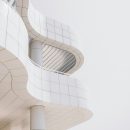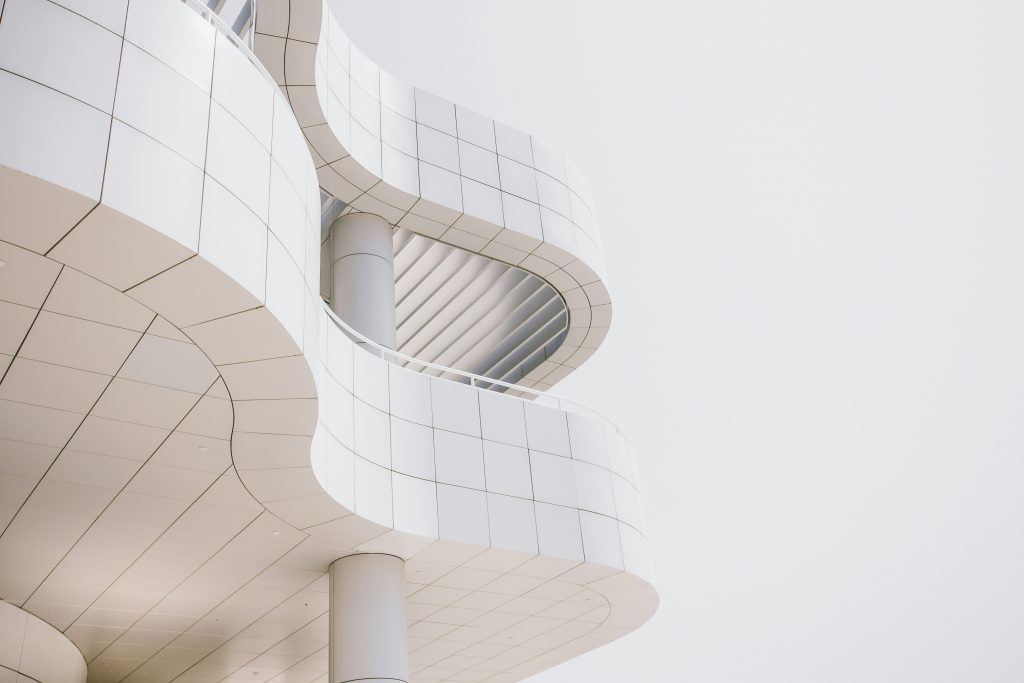
Beautiful Architectural Commercial Property

Photo by Kimon Maritz on Unsplash
While “beautiful” and “commercial” might not initially seem synonymous, we challenge that perception. Commercial buildings aren’t just structures; they are the backdrop for inspiring employees and influencing customers. The impact of commercial architecture is often overlooked.
Of course, the aesthetics of a commercial building are subjective, shaped by personal tastes, cultural nuances, and evolving design trends. However, certain architectural principles and features consistently contribute to what many perceive as beauty in these structures. Let’s look at some of the forms and functions that define captivating commercial spaces.
Design Harmony and Proportion:
Well-designed buildings often exhibit a sense of harmony and proportion. Proportional relationships between different elements, such as windows, doors, and façade details, contribute to a visually balanced structure.
No. 1 Spinningfields is a modern grade A office development in Manchester’s Spinningfields district. The building showcases a contemporary design that incorporates sleek lines and a reflective façade. The building’s vertical fins and glass exterior create a dynamic play of light and shadow, adding to its overall aesthetic appeal.
Innovative Design and Creativity:
Unconventional and innovative designs can capture attention and make a building stand out. Creative use of materials, shapes, and architectural elements can contribute to a building’s uniqueness.
The Cube in Birmingham is a 24-storey mixed-use development consisting of offices, shops, a hotel, and restaurant. It features a cantilevered glass façade with irregularly shaped balconies, giving the building a distinctive and modern appearance. The asymmetrical design and use of reflective materials contribute to a dynamic and visually engaging structure.
Attention to Detail:
High-quality craftsmanship and attention to detail can enhance the overall aesthetic appeal of a commercial building. Thoughtful detailing, intricate ornamentation, and carefully executed finishes contribute to a sense of refinement.
The Royal Liver Building is an iconic waterfront building in Liverpool. It is one of the “Three Graces” that dominate the city’s skyline and features a blend of architectural styles, including elements of Baroque and Art Deco.
The exterior of the Royal Liver Building is adorned with intricate detailing, including sculptures, decorative indentations, and a clock tower. The building’s two liver bird statues at the top add a distinctive touch of local symbolism. Inside, the Liver Building boasts a lobby with beautiful mosaic floors, ornate wrought-iron work, and carefully crafted decorative elements.
Integration with Surroundings:
A beautiful commercial building often complements its surroundings, whether in an urban or natural setting. Consideration of the local context, landscape, and neighbouring structures can result in a building that feels harmonious within its environment.
Victoria Gate Arcade is a retail and leisure complex in Leeds with a range of high-end shops, restaurants, and cafes. The architecture of Victoria Gate Arcade is characterised by a distinctive roof structure and a mix of modern and classical design elements. The use of brickwork and the incorporation of traditional architectural features help the complex blend with the historic context of Leeds. The design pays homage to the Victorian arcades in the city.
Sustainability and Green Design:
Modern architectural beauty now often involves a commitment to sustainability and green design. Incorporating eco-friendly features, energy-efficient systems, and environmentally conscious materials can contribute to the overall appeal of a building.
Originally built in the 1960s the Co-operative Insurance Society (CIS) Tower, Manchester underwent a major renovation in the 21st century to enhance its environmental performance. The retrofit included the addition of a striking solar photovoltaic façade. The 4,000 solar panels generate renewable energy, significantly reducing the building’s carbon footprint. The tower also incorporates other sustainable features such as rainwater harvesting and energy-efficient lighting.
Cultural and Historical Context:
Commercial buildings that respect and respond to the cultural and historical context of their location tend to be appreciated. Designs that reference local architectural traditions or historical elements can create a connection with the community.
The Royal William Yard (Plymouth) was originally a naval victualling yard that has been the Royal redeveloped into a mixed-use space turning the listed buildings into an area with homes, places to eat, galleries, a cinema, offices, retail & artists spaces and a boutique hotel. .
Functionality and Practicality:
A beautiful commercial building should not only be visually appealing but also functional and practical for its intended purpose. Thoughtful space planning and efficient layouts contribute to the overall success of a design.
The Falkirk Wheel, located in Falkirk, Scotland, is an innovative rotating boat lift that connects the Forth and Clyde Canal with the Union Canal. The visitor centre associated with the Falkirk Wheel is a contemporary building designed to complement the engineering marvel of the wheel with large windows that provide panoramic views of the canal and the boat lift. Inside, the centre serves as an educational and event space. The combination of functionality, educational purpose, and a visually appealing design makes it an excellent example.
Natural Light and Ventilation:
The integration of natural light and ventilation is often considered a positive architectural feature. Well-designed openings, skylights, and transparent materials that allow for ample natural light can enhance the overall atmosphere of a building.
One St. Peter’s Square is a modern office building located in the heart of Manchester. This sustainable and energy-efficient structure maximises natural light and ventilation with large windows that allow ample natural light to enter workspaces, creating a bright and open environment.
Iconic and Symbolic Features:
Buildings with iconic or symbolic elements can become landmarks and contribute to a city’s identity. Unique shapes, distinctive silhouettes, or symbolic representations in the architecture can make a building memorable.
The Gherkin, officially known as 30 St Mary Axe, is an iconic commercial skyscraper in the heart of London’s financial district. The building’s unique and distinctive shape resembles a gherkin or pickle. It has become a symbol of modern London architecture and is recognized worldwide. The Gherkin’s sleek glass façade, energy-efficient design, and memorable silhouette contribute to its iconic status as a commercial building with symbolic significance in the cityscape.
Adaptability and Futureproofing:
Beautiful commercial buildings may demonstrate adaptability to changing needs and technologies. Designs that can evolve with time and remain relevant contribute to long-term aesthetic appeal.
The Sharp Project in Manchester is a creative digital workspace and production studio that transformed a former electronics factory into a hub for the creative and digital industries. Its flexible design allows for a variety of uses, including office spaces, production studios, and collaborative areas making it well-suited for the dynamic nature of the creative industry.
Ultimately, the beauty of a commercial building is a complex interplay of design principles, functionality, cultural context, and individual taste. Architects and designers strive to create buildings that not only serve their intended purposes but also enhance the visual and experiential qualities of the built environment.
What do you think are the elements that make a commercial property beautiful? Let us know in the comments below.
For many more examples of ‘awesome architecture’ visit NovaLoca’s Pinterest board.
Or look at some of our listings which we think showcase some great examples:
Grade A Industrial Space, Bloom Camberwell
One Glass Wharf, Temple Quay, Bristol
